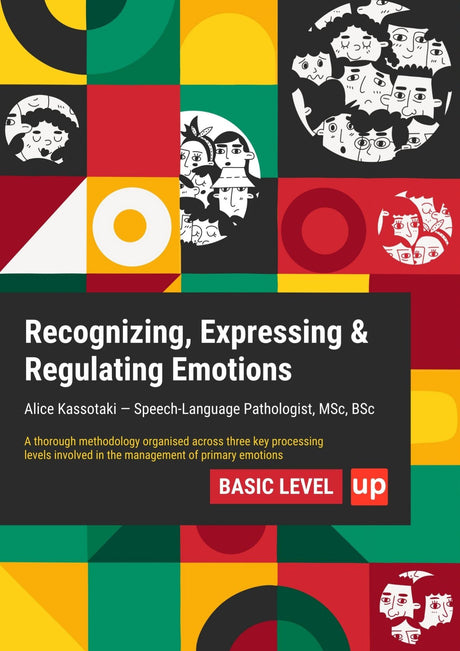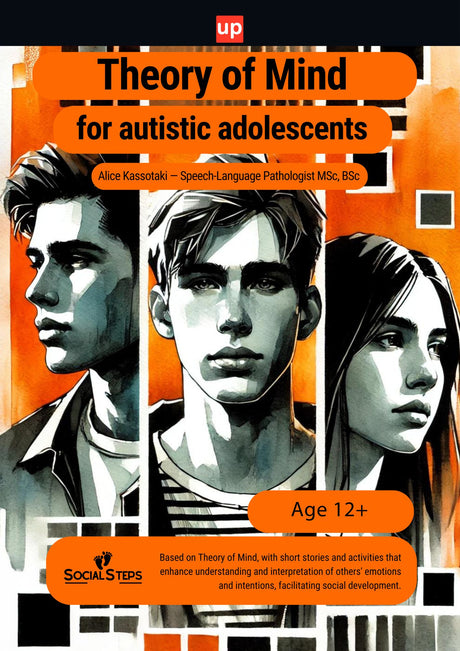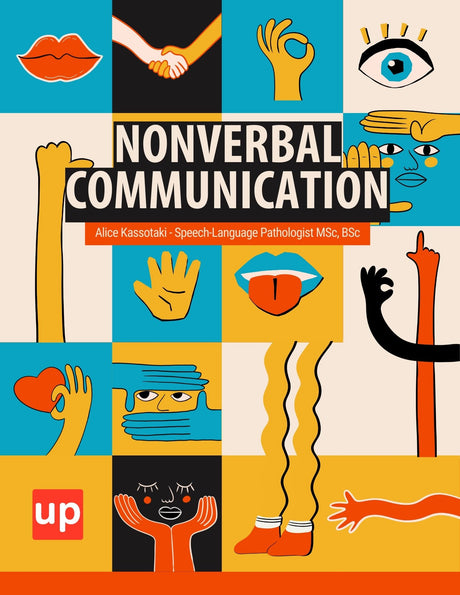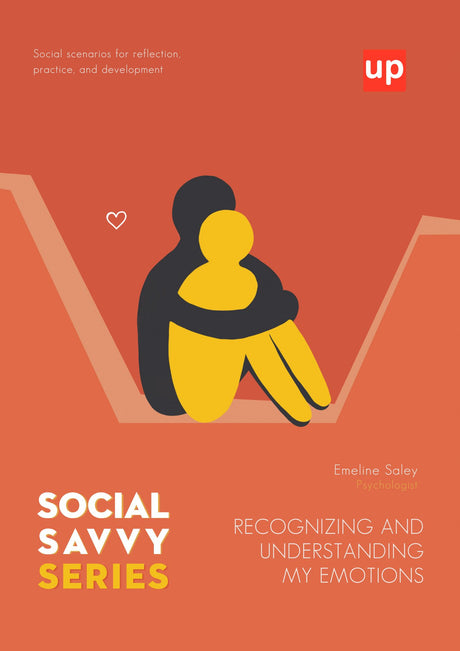Reading is often described as the key that unlocks the world of knowledge, but for many, that key doesn't seem to fit the lock. When the sounds of language refuse to map neatly onto the symbols on a page, the act of reading can become a frustrating puzzle. This specific challenge is often at the heart of a learning disorder known as dysphonetic dyslexia. Unlike a general reading difficulty, this condition stems from a specific breakdown in processing the sound structure of language. This article will decode the complexities of dysphonetic dyslexia, exploring its core symptoms, its neurological and cognitive foundations, and the effective, evidence-based strategies that can empower individuals to become confident and successful readers.
Key Points
- Dysphonetic dyslexia is a specific learning disorder characterized by difficulty processing the sound structure of language, leading to challenges in decoding and spelling unfamiliar words.
- This condition is rooted in deficits in phonological awareness, verbal short-term memory, and auditory processing, which impact the ability to manipulate individual sounds and blend them into words.
- Early diagnosis through formal assessment and targeted, multisensory interventions focusing on phonics and memory skills are essential for helping individuals with dysphonetic dyslexia improve reading fluency and comprehension.
What Exactly is Dysphonetic Dyslexia?

Dysphonetic dyslexia, a subtype of developmental dyslexia, is fundamentally a challenge with auditory and phonological processing. It is not a reflection of a person’s intelligence but rather a different way their brain is wired for language. Dysphonetic dyslexia is classified as a specific learning disorder, recognized for its neurobiological basis and distinct from general learning difficulties. While dyslexia is a widespread reading disorder, affecting around 10% of the UK population according to some estimates, understanding its specific forms is crucial for effective intervention. This type is also commonly referred to as phonological dyslexia or auditory dyslexia, terms that highlight its origin in the sound system of language.
Defining the Core Challenge: A Problem with Sounds
The central issue in dysphonetic dyslexia is a deficit in phonological processing, specifically in processing the sound structure of language. This cognitive skill allows us to recognize and manipulate the sounds within spoken words. Individuals with this condition struggle to build and access the “sound-symbol bridge”—the critical connection between phonemes (the smallest units of sound) and graphemes (the letters or letter groups that represent them). Because they have difficulty processing the sound structure, mastering sound-letter correspondence becomes incredibly hard, making it difficult to “sound out” or decode unfamiliar words using phonetic rules. They may be unable to break words down into their component sounds or blend those sounds back together to form a recognizable word.
Dysphonetic Dyslexia vs. Other Types of Dyslexia
To better understand dysphonetic dyslexia, it’s helpful to contrast it with other forms. Both dysphonetic and dyseidetic dyslexia are forms of learning difficulties that impact reading and spelling in different ways. The most common comparison is with dyseidetic dyslexia, often called visual dyslexia or surface dyslexia. Individuals with visual dyslexia struggle with whole word recognition and remembering the visual appearance of words. They may be skilled at sounding out words phonetically but fail to recognize familiar words by sight, leading to slow reading. In contrast, someone with dysphonetic dyslexia might be better at memorizing whole words but be completely stalled by a new word they cannot sound out. Some individuals experience challenges in both areas, a condition referred to as mixed dyslexia, which combines deficits in both phonological and visual processing.
The Roots of the Struggle: Unpacking Cognitive and Neural Foundations
The difficulties associated with dysphonetic dyslexia are not behavioral choices but are rooted in specific cognitive and neurological functions. Research is ongoing to better understand the underlying causes of dysphonetic dyslexia, including how differences in brain structure related to language processing may contribute to the condition. Understanding these underpinnings is essential for developing strategies that target the source of the problem.
The Central Role of Phonological Processing
Phonological processing is the cornerstone of learning to read an alphabetic language. It encompasses several key abilities, with phonological awareness being paramount. This is the broad skill of recognizing that words are made up of sounds. A more refined subset of this is phonemic awareness—the ability to identify and manipulate individual sounds in words. For individuals with dysphonetic dyslexia, a weakness in phonemic awareness is a primary obstacle. Difficulties in identifying and manipulating individual phonemes are a hallmark of this type of dyslexia, making it challenging to segment a word like “cat” into its three distinct sounds (/k/, /æ/, /t/) or blend those sounds back together, a process fundamental to both reading and writing.
The Impact on Verbal Short-Term Memory
Reading and spelling rely heavily on verbal short-term memory, which allows us to hold and work with sound-based information for brief periods. When decoding a multi-syllable word, a reader must hold the initial sounds in their memory while they process the subsequent ones. A deficit in this cognitive skill means that by the time an individual with dysphonetic dyslexia gets to the end of a word, they may have forgotten the sounds at the beginning or may forget or substitute the last letter of the word. This type of error, such as omitting or changing the last letter, is common when verbal short-term memory is limited. This makes blending sounds into a coherent word nearly impossible and places a significant cognitive load on the reading process.
How the Brain Processes Language for Reading
Neuroimaging studies have shown that reading involves a complex network of brain regions. For skilled readers, auditory processing centers that manage sounds are robustly connected to visual areas responsible for identifying letters. A key area, the visual word form area (VWFA), becomes specialized in rapid, automatic word recognition. Dysfunction in Wernicke's area can contribute to difficulties in language comprehension and phonemic awareness in dysphonetic dyslexia. Additionally, abnormalities in the angular gyrus have been observed in individuals with dyslexia, affecting visual word recognition. Processing of visual information is also disrupted in these brain regions. In individuals with dysphonetic dyslexia, there is often evidence of under-activation in the brain regions responsible for phonological processing and connecting these sounds to visual letter forms. The brain may try to compensate by relying more heavily on other areas, but this route is often slower and less efficient for decoding new words.
Auditory Processing Difficulties Related to Language
Beyond phonological deficits, some individuals with dysphonetic dyslexia may have broader auditory processing difficulties related to language. They may have trouble holding and processing verbal items, such as words and sounds, in working memory. This can manifest as trouble distinguishing between similar-sounding phonemes, such as /b/ and /p/, or difficulty processing rapid speech. While their hearing may be perfectly normal, their brain struggles to accurately and swiftly interpret the auditory stimuli that form spoken language. This foundational weakness in language processing directly hinders the ability to map those sounds onto written symbols.
Recognizing the Signs: Common Symptoms of Dysphonetic Dyslexia

Identifying dysphonetic dyslexia involves observing a consistent pattern of challenges in reading, writing, and related language skills. Dyslexic children often present with a reading disability that affects multiple aspects of their academic performance. The fact that between 70% and 80% of people with poor reading skills are likely dyslexic underscores the importance of recognizing these specific symptoms early.
Early Childhood Indicators (Preschool to Early Elementary)
The signs of dysphonetic dyslexia can appear even before formal reading instruction begins. Preschoolers may show difficulties with:
- Learning and remembering nursery rhymes.
- Recognizing words that rhyme.
- Recalling the letters of the alphabet.
- Pronouncing long or complex words correctly (e.g., saying “pasghetti” instead of “spaghetti”).
- Learning the sounds associated with letters.
- Having a family history of language or reading difficulties, which can be an early indicator of risk for dysphonetic dyslexia.
Reading Difficulties
Once a child begins to read, the core symptoms become more apparent. Reading is often slow, effortful, and filled with errors. Children with dysphonetic dyslexia often perform below their expected reading level on standardized assessments. Key reading difficulties include:
- A significant struggle to decode or sound out new and unfamiliar words.
- Guessing at words based on the first letter or context rather than using phonetic cues.
- Difficulty blending individual sounds into a complete word.
- Poor word recognition for non-phonetic or irregular words that cannot be sounded out.
- Reading fluency is significantly impacted, which in turn affects reading comprehension.
Spelling and Writing Challenges
The same phonological deficits that impact reading also profoundly affect spelling and writing. Children with dysphonetic dyslexia may have a low percentage of correctly spelled words on spelling assessments, especially when asked to spell words they have not encountered before (unknown words). Their ability to spell words is often inconsistent and not based on typical phonetic patterns. Common spelling mistakes are often not phonetically plausible. For example, a child might spell “phone” as “fone,” which is phonetically correct, but someone with dysphonetic dyslexia might spell it in a way that bears little resemblance to its sound. Other challenges include:
- Omitting, adding, or substituting letters because they cannot segment the sounds in the word.
- Inconsistent spelling of the same word across a single document.
- Difficulty learning and applying common spelling patterns and rules.
Other Related Cognitive Skills
Dysphonetic dyslexia can also be associated with other observable difficulties. These may include problems with rapid automatized naming (RAN), which is the ability to quickly name a series of familiar items like letters or colors. This skill is linked to reading fluency. Some individuals with dysphonetic dyslexia may also exhibit weak visual motor skills, which can impact handwriting and other tasks requiring coordination between visual and motor processes. Individuals may also struggle with word retrieval, feeling as though a word is on the “tip of their tongue,” reflecting an underlying inefficiency in the brain’s language processing networks.
Diagnosis: Seeking Clarity and Support

A formal diagnosis is a critical step toward securing the right support and interventions. A formal assessment by a qualified professional is essential for accurately diagnosing dysphonetic dyslexia. It provides a clear explanation for an individual’s struggles and helps create a targeted plan for improvement.
When to Consider Professional Evaluation
If a child or adult consistently exhibits the symptoms of dysphonetic dyslexia despite receiving quality instruction, a professional evaluation should be considered. Persistent difficulties with decoding, phonetically inaccurate spelling, and slow reading speed that do not improve over time are significant red flags. Persistent issues that affect reading fluency and accuracy are key indicators for seeking professional evaluation. Early identification is key, as interventions are often most effective when started early.
The Assessment Process
A comprehensive psycho-educational assessment conducted by a qualified professional, such as an educational psychologist, is necessary for a diagnosis. This process involves a battery of standardized tests that evaluate various cognitive skills, including the child's ability to process sounds, recognize words, and perform other key reading-related tasks. These assessments specifically measure:
- Phonological processing and phonemic awareness.
- Verbal short-term memory and working memory.
- Decoding skills and word recognition.
- Reading fluency and reading comprehension.
- Spelling and writing abilities.
- Overall intellectual ability (IQ).
The results help create a detailed profile of the individual’s strengths and weaknesses.
Differentiating from Other Learning and Attention Challenges
During the assessment, it is crucial to differentiate dysphonetic dyslexia from other conditions that can affect learning, such as ADHD, other language disorders, or hearing impairments. Dysphonetic dyslexia is one of several learning disabilities that can impact academic performance, and accurate differentiation is crucial for effective intervention. While these conditions can co-occur with dyslexia, they require different or additional support strategies. A thorough evaluation will help distinguish between these challenges to ensure the intervention plan is precisely tailored to the individual’s needs.
Empowering Strategies for Learning and Growth
With the right support, individuals with dysphonetic dyslexia can learn to read and write effectively. Building reading skills is a stratified process, where foundational abilities must be mastered first before moving on to more advanced tasks. The focus of intervention is to build the foundational skills that are weak while leveraging areas of strength.
Foundational Skill Building: Phonological Awareness and Phonics
The most effective interventions for dysphonetic dyslexia are structured, systematic, and explicit. Programs like Orton-Gillingham and other structured literacy approaches directly teach phonological awareness and the rules of phonics. They use multisensory techniques—engaging auditory, visual, and kinesthetic-tactile pathways simultaneously—to forge strong, lasting connections between sounds and letters. Research supports these methods, indicating that up to 60% of individuals with dyslexia respond positively to such evidence-based interventions. Once these foundational skills are established, subsequent steps can focus on more complex aspects of reading and writing.
Enhancing Verbal Short-Term Memory
Strengthening verbal short-term memory can support the decoding process. Activities such as repeating sequences of numbers or words, playing sound-based memory games (e.g., "I went to the market and bought..."), and practicing visualization techniques to hold information can build this crucial cognitive skill over time.
Developing Reading Fluency and Word Recognition
Once decoding skills improve, the focus can shift to building reading fluency. This is often achieved through repeated readings of the same text until it can be read accurately and at a reasonable pace. In the same way that athletes practice basic skills before advancing to more complex techniques, repeated reading helps solidify foundational reading abilities. This practice helps move words from the slow, decoding part of the brain to the more automatic word recognition pathway, freeing up cognitive resources for comprehension.
Supporting Reading Comprehension
Reading comprehension can suffer when a reader expends all their mental energy on decoding. Strategies to support comprehension include teaching students to preview texts, ask questions as they read, visualize the content, and summarize paragraphs. Having texts read aloud, either by the student or an adult, can also support comprehension and vocabulary development while their decoding skills develop.
The Role of Visual Processing Skills in Grapheme-Phoneme Mapping
While the primary deficit in dysphonetic dyslexia is auditory, strong visual processing skills are leveraged in effective interventions. Multisensory instruction uses visual cues, such as color-coding letters or tracing them in sand, to help cement the link between the visual form of a letter (grapheme) and its sound (phoneme). This targeted use of visual stimuli helps build the crucial sound-symbol bridge from both directions.
Leveraging Technology and Accommodations
Assistive technology can be a game-changer. Text-to-speech software can read digital text aloud, improving access to information and modeling fluent reading. Speech-to-text tools can help with the writing process, while apps and software designed for phonics and phonemic awareness can make practice more engaging. Classroom accommodations, such as extended time on tests and access to teacher notes, can also level the playing field. Teachers play a critical role in identifying students' needs and ensuring that appropriate accommodations and technologies are provided.
A Holistic Approach: Support at Home and School

Creating a supportive ecosystem around the individual is just as important as direct instruction. Environmental factors, such as the quality of support at home and school, can significantly influence the progress of individuals with dysphonetic dyslexia. Collaboration between parents, educators, and specialists ensures a consistent and encouraging approach.
Parental Involvement and Home Support
At home, parents can foster a positive learning environment. This includes reading aloud to their child to build vocabulary and a love for stories, which can be challenging when only 1 in 3 young people said they enjoyed reading in 2025. Playing word games that focus on sounds, rhymes, and syllables can build phonological awareness in a fun, low-pressure way. Patience, encouragement, and celebrating small victories are essential for building a child's confidence and resilience.
Educational Support and Collaboration
In the school setting, close collaboration between the classroom teacher, special education staff, and parents is vital. Children with dysphonetic dyslexia benefit most when educators, specialists, and families work together to provide consistent support. Educators can implement accommodations and integrate multisensory techniques into their instruction. Regular communication ensures that everyone is aware of the student’s progress and challenges, allowing for timely adjustments to the support plan. Advocating for evidence-based reading instruction within the school can benefit not only the individual child but all students.
Conclusion
Understanding dysphonetic dyslexia means moving beyond the simple label of “reading difficulty” and recognizing it as a specific, neurobiological challenge with phonological processing. Dysphonetic dyslexia can affect both children and adults, and the challenges faced by a dyslexic child may persist into adulthood. Normal readers typically rely on automatic, visual, and auditory processing pathways for quick word recognition, whereas individuals with dysphonetic dyslexia depend more on alternative neural routes, making reading more effortful. It is a struggle to connect the world of sounds to the world of written symbols. While the path for individuals with this learning disorder can be challenging, it is far from insurmountable. By identifying the specific symptoms early, seeking a formal diagnosis, and implementing targeted, evidence-based strategies, we can effectively build the neural pathways for reading.
Frequently Asked Questions about Dysphonetic Dyslexia
What is dysphonetic dyslexia?
Dysphonetic dyslexia is a specific learning disorder characterized by difficulties in processing the sound structure of language. Individuals with this condition struggle to connect phonemes (individual sounds) to graphemes (letters), which impacts their ability to decode and spell unfamiliar words.
How does dysphonetic dyslexia differ from other types of dyslexia?
Unlike dyseidetic dyslexia, which involves challenges with whole word recognition and visual processing, dysphonetic dyslexia primarily affects phonological processing and auditory skills. Some individuals may experience mixed dyslexia, where both phonological and visual processing are impaired.
What are common signs of dysphonetic dyslexia in children?
Signs include difficulty decoding new words, poor phonemic awareness, challenges blending sounds, inconsistent spelling, and weak verbal short-term memory. Early indicators may also include trouble learning nursery rhymes, recognizing rhymes, or recalling individual letters.
How is dysphonetic dyslexia diagnosed?
Diagnosis involves a formal psycho-educational assessment by qualified professionals, including tests of phonological processing, verbal memory, word recognition, reading fluency, and spelling. It also includes ruling out other conditions like ADHD or hearing impairments.
Can dysphonetic dyslexia be treated or managed?
Yes. Effective interventions focus on building phonological awareness, phonics skills, and verbal short-term memory through structured, multisensory programs. Individualized support plans and assistive technology can also help improve reading and writing skills.
Is dysphonetic dyslexia hereditary?
Family history is a known risk factor. Genetic influences can predispose individuals to developmental dyslexia, including dysphonetic dyslexia, although environmental factors also play a significant role.
What role do parents and educators play in supporting children with dysphonetic dyslexia?
Parents can create supportive home environments by reading aloud, playing sound-based games, and encouraging practice. Educators can implement evidence-based, multisensory instruction and accommodations, working closely with families to monitor progress and adjust strategies.
Are adults affected by dysphonetic dyslexia?
Yes. Dysphonetic dyslexia can persist into adulthood. Adults may continue to face challenges with decoding unfamiliar words and spelling but can benefit from targeted strategies and accommodations tailored to their needs.
How does verbal short-term memory affect reading in dysphonetic dyslexia?
Verbal short-term memory helps hold sounds temporarily while decoding words. Deficits in this area can cause individuals to forget earlier sounds in a word before completing the decoding process, leading to errors in reading and spelling.
What technologies can assist individuals with dysphonetic dyslexia?
Tools such as text-to-speech software, speech-to-text applications, and phonics-based learning apps can support reading and writing. These technologies provide alternative access to information and reinforce phonological skills in engaging ways.
Original content from the Upbility writing team. Reproducing this article, in whole or in part, without credit to the publisher is prohibited.
References
-
Shaywitz, S.E. Dyslexia. N Engl J Med. 1998;338(5):307-312. doi:10.1056/NEJM199801293380507
-
Snowling, M.J. Dyslexia (2nd ed.). Wiley-Blackwell; 2019.
-
Lyon, G.R., Shaywitz, S.E., & Shaywitz, B.A. A definition of dyslexia. Ann Dyslexia. 2003;53(1):1-14. doi:10.1007/s11881-003-0001-9
-
Peterson, R.L., & Pennington, B.F. Developmental dyslexia. Annu Rev Clin Psychol. 2012;8:57-79. doi:10.1146/annurev-clinpsy-032511-143041
-
Gabrieli, J.D.E. Dyslexia: A new synergy between education and cognitive neuroscience. Science. 2009;325(5938):280-283. doi:10.1126/science.1171999
-
Tallal, P. Language disabilities in children: Perceptual correlates. Int J Pediatr Otorhinolaryngol. 1980;2(1):1-13. doi:10.1016/0165-5876(80)90031-0
-
Boder, E. Developmental dyslexia: A diagnostic approach based on three subtypes. Dev Med Child Neurol. 1973;15(1):663-687. doi:10.1111/j.1469-8749.1973.tb05190.x
-
Vellutino, F.R., Fletcher, J.M., Snowling, M.J., & Scanlon, D.M. Specific reading disability (dyslexia): what have we learned in the past four decades? J Child Psychol Psychiatry. 2004;45(1):2-40. doi:10.1111/j.1469-7610.2004.00251.x
-
Pennington, B.F. Diagnosing learning disorders: A neuropsychological framework. Guilford Press; 2009.









